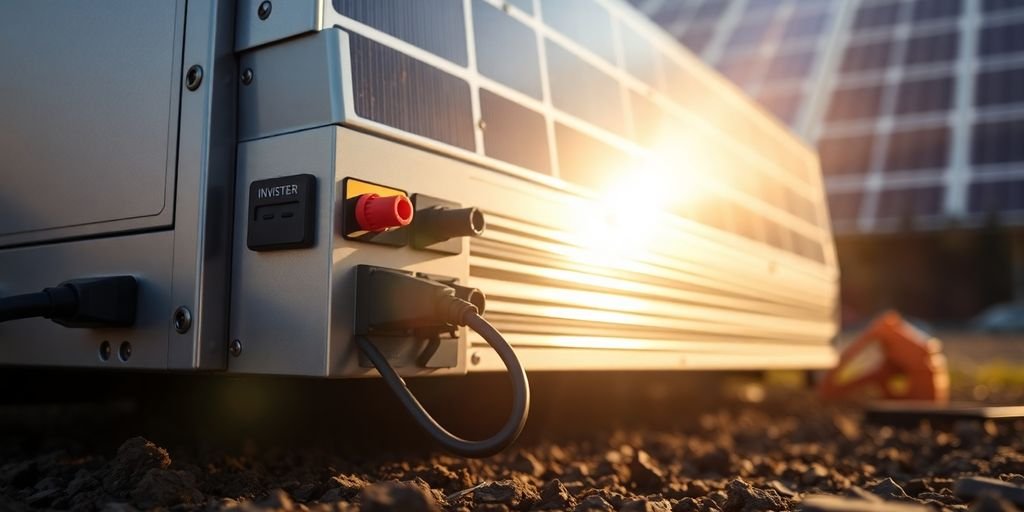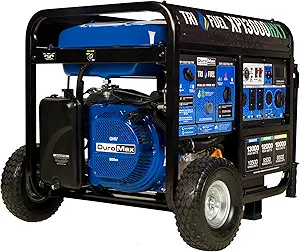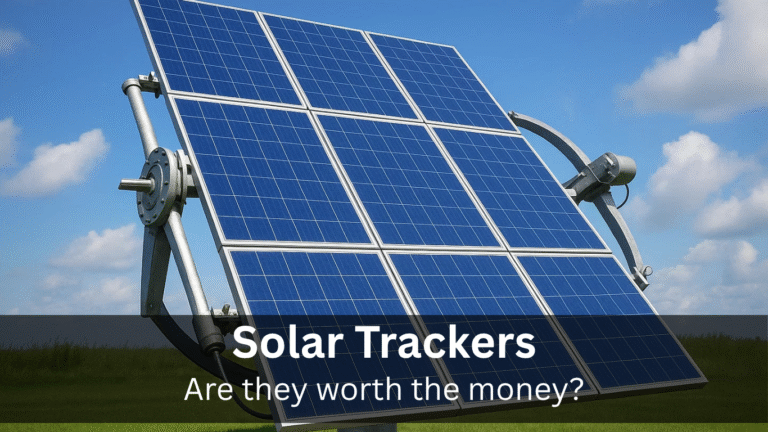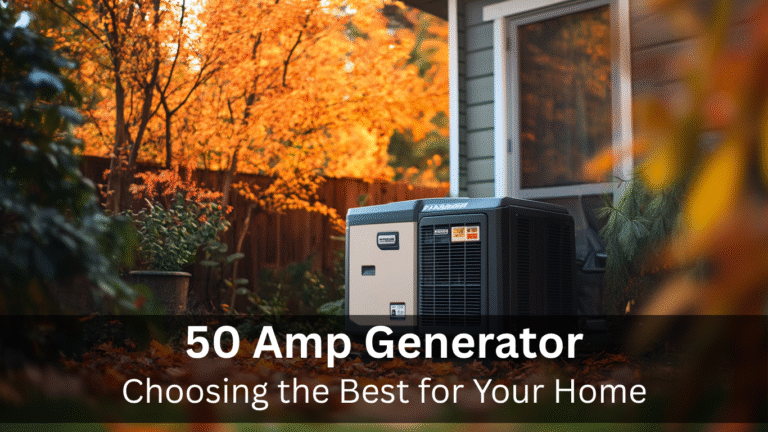Maximizing Efficiency with the Right Solar Power Inverter
Picking the right solar power inverter is a big deal for your home’s energy system. It’s like the brain of the whole operation, making sure you get the most out of your solar panels. If you want your solar setup to work its best, and save you money in the long run, understanding these inverters is super important. This article will walk you through everything you need to know to make a smart choice and keep your solar power flowing smoothly.
Key Takeaways
- The solar power inverter is the key part of your solar system, changing DC power from panels into AC power for your home.
- Getting the right size solar power inverter for your energy needs is important to avoid wasting power.
- You can cut down on energy loss by having good wiring and using quality solar power inverter parts.
- Regular checks and cleaning of your solar power inverter help it work well for a long time.
- When choosing a solar power inverter, look at how efficient it is, its power rating, and how tough it is.
Understanding Your Solar Power Inverter
Defining the Solar Power Inverter
So, what exactly is a solar power inverter? Well, it’s basically the brain of your solar panel system. Its main job is to convert the direct current (DC) electricity that your solar panels produce into alternating current (AC) electricity, which is what your home appliances use. Think of it as a translator, taking the language of the sun and making it understandable for your fridge, TV, and everything else. Without it, your solar panels would be pretty useless for powering your home. The solar inverter’s role is critical.
Types of Solar Power Inverters
There are a few different kinds of solar inverters, and each has its own strengths and weaknesses. The most common types include:
- String Inverters: These are the most traditional and often the most cost-effective. They connect all your solar panels in a series, like Christmas lights. If one panel underperforms, it can affect the whole string.
- Microinverters: These are smaller inverters that are attached to each individual solar panel. This means that each panel operates independently, so if one panel is shaded or has an issue, it won’t affect the others. They’re generally more expensive than string inverters but can offer better performance in certain situations.
- Power Optimizers: These are similar to microinverters in that they’re installed at each panel, but they don’t actually convert DC to AC at the panel level. Instead, they optimize the DC electricity before sending it to a central inverter. This can improve overall system efficiency.
Choosing the right type depends on your specific needs and circumstances. Factors like shading, roof orientation, and budget all play a role.
Role in Energy Conversion
The energy conversion process is where the magic happens. Solar panels generate DC electricity when sunlight hits them. This DC electricity flows to the inverter, which then converts it into AC electricity. This AC electricity can then be used to power your home, and any excess electricity can be sent back to the grid. The efficiency of this conversion process is super important, as it determines how much of the sun’s energy you can actually use. A high-quality inverter will minimize energy losses and maximize your solar power output.
A good inverter is like a good translator: it accurately conveys the message (energy) without losing anything in the process. Investing in a quality inverter is an investment in the overall performance and longevity of your solar power system.
Proper Sizing for Optimal Solar Power Inverter Performance
It’s easy to overlook, but getting the right size inverter is super important for your solar setup. An inverter that’s too small won’t be able to handle all the power your panels generate, and one that’s too big is just a waste of money. Let’s break down how to make sure you get it right.
Calculating Your Energy Needs
First things first, you need to figure out how much power you actually use. This isn’t just a guess; it involves looking at your past electricity bills and making a list of all the appliances and devices you regularly use. Add up the wattage of everything to get a sense of your total energy consumption. This calculation forms the basis for selecting an appropriately sized inverter.
Here’s a simple way to estimate:
- Review your electricity bills for the past year.
- Identify your highest monthly usage (in kWh).
- Convert kWh to daily usage by dividing by the number of days in the month.
Understanding your energy consumption patterns is the first step towards efficient solar power inverter sizing. This ensures that the inverter can handle your typical energy demands without being excessively oversized.
Considering Peak Load Requirements
Your peak load is the maximum amount of power you use at any given time. This usually happens when multiple appliances are running simultaneously – think air conditioning, microwave, and TV all going at once. Your inverter needs to be able to handle this surge without tripping or shutting down. To determine your peak load, identify the appliances that are most likely to run at the same time and add up their wattages. It’s better to overestimate slightly than to underestimate.
| Appliance | Wattage (approx.) |
|---|---|
| Air Conditioner | 1500 W |
| Refrigerator | 200 W |
| Microwave | 1000 W |
| Television | 150 W |
| Lights (multiple) | 200 W |
| Total | 3050 W |
Selecting the Right Capacity Solar Power Inverter
Now that you know your energy needs and peak load, you can choose the right inverter. As a general rule, your inverter should be sized to handle your peak load plus a little extra for safety. It’s also a good idea to consider future expansion. If you plan to add more solar panels or appliances later, choose an inverter with some extra capacity. This will save you from having to replace it down the road. When selecting the right capacity solar power inverter, consider the compatibility with your solar panels. Also, remember that regular maintenance is essential to keep your solar power inverter operating at peak efficiency.
Here are some key considerations:
- System Size and Scale: The inverter selected should be suitable for the size of the entire solar system. For small home solar systems, single-phase inverters are usually the best choice.
- Future Expansion: If you are going to add some solar panels or load equipment, you should select an inverter with enough redundancy so that the system can respond flexibly to future changes.
- Monitoring Capabilities: Solar inverters with real-time monitoring functions will show the generation situation of the system, detect the coming problems in time, and analyze the data in order to optimize performance.
Minimizing Energy Losses in Your Solar Power Inverter System
Alright, let’s talk about keeping those precious electrons from escaping your solar setup. It’s like making sure your wallet doesn’t have holes – you want to hold onto every bit of energy you generate. Energy loss is a real thing, and it can seriously impact how efficient your system is. So, what can you do about it?
Optimizing Wiring for Efficiency
Think of your wiring as the veins and arteries of your solar system. If they’re too thin or too long, you’re going to have resistance, and resistance means energy loss. Using the correct gauge wire is super important. Make sure your wires are sized appropriately for the current they’re carrying. Shorter wire runs are better, too. Less distance means less resistance. Also, check your connections regularly. Loose connections? More resistance. Tighten those bad boys up! You might want to consider optimizing solar panel angles to maximize energy capture in the first place.
Utilizing Energy-Efficient Appliances
This one seems obvious, but it’s worth repeating: use energy-efficient appliances. It’s like trying to fill a bucket with a hole in it. If your appliances are energy hogs, they’re going to suck up more power, and your inverter is going to have to work harder. Look for appliances with high Energy Star ratings. LED lighting is a no-brainer. And be mindful of phantom loads – those devices that keep drawing power even when they’re turned off. Unplug them! Every little bit helps. Here’s a quick rundown:
- LED Lighting: Uses significantly less energy than incandescent bulbs.
- Energy Star Appliances: Look for the label when purchasing new appliances.
- Smart Power Strips: Eliminate phantom loads by automatically cutting power to devices when not in use.
Investing in Quality Solar Power Inverter Components
This is where you get what you pay for. A cheap inverter might save you some money upfront, but it could be costing you more in the long run due to lower efficiency and higher energy losses. Invest in a high-quality inverter from a reputable manufacturer. Look for inverters with high efficiency ratings – ideally, 95% or higher. Also, consider the components used in the inverter. Better components mean better performance and longer lifespan. It’s like buying a car – you can get a cheap one that will break down all the time, or you can invest in a reliable one that will last for years.
Think of your solar power inverter as the heart of your system. A healthy heart pumps blood efficiently, while a weak heart struggles. The same goes for your inverter. A high-quality inverter converts DC power to AC power with minimal loss, while a cheap inverter wastes energy and reduces your overall system efficiency.
Regular Maintenance for Your Solar Power Inverter

It’s easy to forget about your solar power inverter once it’s installed and humming along, but regular maintenance is super important. Think of it like your car – you wouldn’t just drive it until it breaks down, right? Same goes for your inverter. Keeping up with maintenance will help it run efficiently and extend its lifespan. Neglecting it can lead to decreased performance and costly repairs down the road. Let’s get into the specifics of what that maintenance looks like.
Performing Visual Inspections
Regular visual checks are the easiest way to spot potential problems early. Make it a habit to glance at your inverter every month or so. Look for anything out of the ordinary, like:
- Cracked or damaged casing
- Loose or frayed wires
- Signs of overheating (discoloration, bulging)
- Accumulation of dust or debris
If you notice anything suspicious, don’t ignore it! It’s better to address a small issue before it turns into a big one. For example, if you see a loose wire, carefully tighten it (after disconnecting the power, of course!). If you’re not comfortable doing it yourself, call a professional. Regular solar inverter performance monitoring is key to identifying issues early.
Scheduling Professional Check-ups
While you can handle some basic maintenance yourself, it’s a good idea to schedule professional check-ups at least every other year. A qualified technician can perform more in-depth inspections and tests to ensure everything is running smoothly. They can also identify potential problems that you might miss during a visual inspection.
Think of it as going to the doctor for a physical. You might feel fine, but a check-up can reveal underlying issues that need to be addressed. A professional can check the inverter’s voltage, current, and other parameters to ensure they’re within the correct range. They can also clean the internal components and check for any signs of wear or tear.
Cleaning and Environmental Considerations
Keeping your inverter clean is another simple way to improve its performance and extend its lifespan. Dust, dirt, and debris can accumulate on the inverter’s surface, blocking ventilation and causing it to overheat. Use a soft, dry cloth to wipe down the inverter regularly. Avoid using water or cleaning solutions, as they could damage the internal components. Also, make sure the area around the inverter is well-ventilated. Don’t block the vents with boxes or other objects. Proper ventilation helps the inverter stay cool and operate efficiently. Environmental factors play a big role in inverter health.
Key Factors for Selecting a Solar Power Inverter

Choosing the right solar power inverter is a big deal. It’s not just about getting any inverter; it’s about finding one that fits your specific needs and will keep your system running efficiently for years to come. There are a few key things I always consider before making a purchase.
Assessing Inverter Efficiency
Inverter efficiency is basically how well the inverter converts DC power from your solar panels into usable AC power. The higher the efficiency, the less energy you lose in the conversion process. This is super important because those losses add up over time and can really impact your overall energy production. Even on cloudy days, a highly efficient inverter will ensure that the energy is still maximally produced. It’s usually expressed as a percentage, so look for inverters with high ratings.
Determining the Correct Power Rating
The power rating of an inverter tells you the maximum amount of power it can handle. You need to make sure the inverter’s power rating matches the total power output of your solar panels. An inverter with too low power rating cannot handle the output power of the whole system, while one that is too high may lead to increased cost and reduced efficiency. It’s like matching the right size engine to a car – too small, and it won’t perform; too big, and it’s just a waste. Also, think about future expansion. If you plan to add more panels later, get an inverter with some extra capacity. This ensures the system can respond flexibly to future changes. You should also consider the best solar battery storage options to maximize your energy usage.
Considering Durability and Warranty
Solar power inverters are an investment, so you want one that’s built to last. Look for inverters from reputable manufacturers with a good track record. Check out the warranty too. A longer warranty usually means the manufacturer has confidence in their product. Consider these points:
- Material quality
- Weather resistance
- Warranty length
I always tell people to read the fine print on warranties. Some warranties only cover certain parts or require you to ship the inverter back to the manufacturer for repairs, which can be a hassle. A good warranty should cover parts and labor and offer on-site service if possible.
Advanced Features of Modern Solar Power Inverters
Smart Grid Integration Capabilities
Modern solar inverters are way more than just DC-to-AC converters. They’re becoming increasingly integrated with smart grids, which opens up a whole new world of possibilities. These "smart inverters" can communicate bidirectionally with the power grid, allowing for real-time monitoring and optimization of energy output. This is a big deal because it helps the grid manage energy loads, especially during peak times. Think of it like this: when the grid is under pressure, the smart inverter can reduce the amount of electricity it sends back or even store excess power, easing the strain. They also have voltage regulation and frequency response features, which help maintain power quality and stability. It’s all about making the grid more resilient and efficient.
Integration with Battery Storage Systems
With battery storage becoming more common, the synergy between solar inverters and batteries is critical. Hybrid inverters are emerging as a mainstream solution, integrating solar power generation with battery storage. These inverters let you store excess power generated during the day for use at night or during peak demand. This not only improves the overall efficiency of your solar system but also reduces your reliance on traditional power sources. It’s a win-win for sustainability and your wallet. While hybrid inverters have higher upfront costs due to the integrated battery management system and the need for additional batteries, their self-sufficiency and long-term energy-saving potential make them a worthwhile investment.
Monitoring and Control Features
Modern solar inverters come packed with monitoring and control features that give you a detailed look at your system’s performance. You can track energy production, identify potential issues, and optimize your system for maximum efficiency. These features often include:
- Real-time data on energy production and consumption
- Remote monitoring via mobile apps or web portals
- Alerts and notifications for system errors or performance drops
- Historical data analysis to identify trends and optimize performance
Having access to this data empowers you to make informed decisions about your energy usage and ensure that your solar power inverter is operating at its best. It’s like having a personal energy manager at your fingertips. Plus, with advancements in solar panel technology, these monitoring systems are becoming even more sophisticated, providing even greater insights into your system’s performance.
Maximizing Your Solar Power Inverter Investment
Long-Term Performance Benefits
Investing in a quality solar power inverter isn’t just a short-term decision; it’s a commitment to long-term performance and reliability. A well-chosen inverter can significantly extend the lifespan of your entire solar system, ensuring consistent energy production for years to come. Think of it like this: a cheap inverter might save you some money upfront, but it could end up costing you more in the long run through frequent repairs, reduced efficiency, and a shorter overall lifespan. Consider the long-term benefits:
- Reduced maintenance costs over time.
- Consistent energy output, maximizing your return on investment.
- Extended lifespan of your solar panels.
Economic Advantages of High Efficiency
The economic advantages of a high-efficiency solar power inverter are pretty clear. A more efficient inverter converts a higher percentage of DC power from your solar panels into usable AC power for your home. This translates directly into lower electricity bills and a faster payback period for your solar investment. Efficiency is key here. Let’s break it down:
- Higher energy production from the same amount of sunlight.
- Reduced reliance on grid electricity, lowering your monthly bills.
- Increased eligibility for solar battery backup systems and incentives.
Investing in a high-efficiency inverter might seem like a bigger expense initially, but the long-term savings and increased energy production make it a worthwhile investment. It’s about maximizing the value you get from your solar panels.
Future-Proofing Your Solar Power Inverter System
Future-proofing your solar power inverter system involves selecting an inverter that can adapt to evolving energy needs and technological advancements. This means considering factors like smart grid compatibility, battery storage integration, and remote monitoring capabilities. You want an inverter that can handle future upgrades and expansions without needing a complete overhaul. Here’s what to keep in mind:
- Smart grid integration allows you to participate in grid services and potentially earn additional revenue.
- Battery storage compatibility enables you to store excess solar energy for later use, increasing your energy independence.
- Remote monitoring features provide valuable insights into your system’s performance, allowing you to identify and address any issues promptly.
Conclusion
So, picking the right solar inverter is a big deal for getting the most out of your solar setup. This little box is super important because it changes the power from your solar panels into something your home can actually use. We talked about how important it is to size it right, keep energy from getting lost, and do regular check-ups. Doing these things can really make your solar system work better. It’s like making sure all the parts of a puzzle fit perfectly. When you get the right inverter, your solar system will run smoothly, save you money, and help the planet. It’s a win-win, really.
Frequently Asked Questions
What does a solar power inverter do?
A solar power inverter is like the brain of your solar energy system. It takes the special type of electricity made by your solar panels (called DC) and changes it into the kind of electricity your home appliances use (called AC). Without it, your solar panels couldn’t power your lights or TV.
What are the different kinds of solar power inverters?
There are a few main types. Some are good for systems where all panels work together, others are better if you have shade on some panels, and some can even store extra power in batteries. The best type for you depends on your home and how you use electricity.
Why is choosing the right size for my solar power inverter so important?
Picking the right size is super important! If it’s too small, you won’t get all the power your panels can make. If it’s too big, you might spend too much money and still not be as efficient. You need to figure out how much electricity your home uses, especially during busy times, to choose the perfect size.
How can I stop my solar power system from losing energy?
You can do a few things! Make sure your wires are thick enough and connected well, use appliances that don’t need a lot of electricity, and buy good quality parts for your solar system. These steps help make sure you don’t waste any of that precious solar power.
What kind of care does my solar power inverter need?
Just like checking your car, your inverter needs regular check-ups. Look at it often to make sure nothing looks broken or dirty. It’s also a good idea to have a professional come by once in a while to give it a thorough look. Keeping it clean and protected from bad weather helps it last longer.
What should I look for when buying a solar power inverter?
When buying an inverter, think about how well it changes DC to AC (its efficiency), if it can handle all the power your panels make (its power rating), and how long it’s expected to last (durability and warranty). A good inverter will save you money and headaches in the long run.








